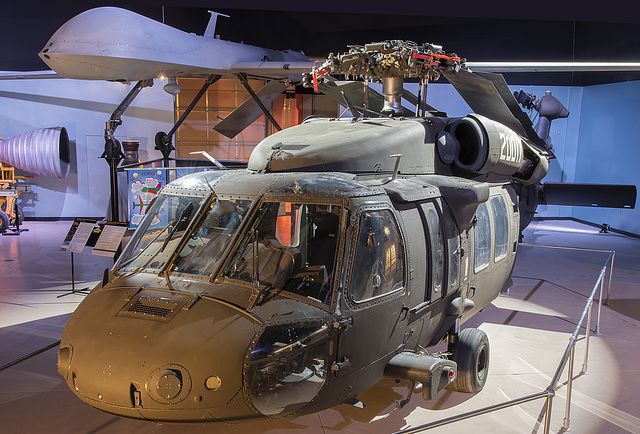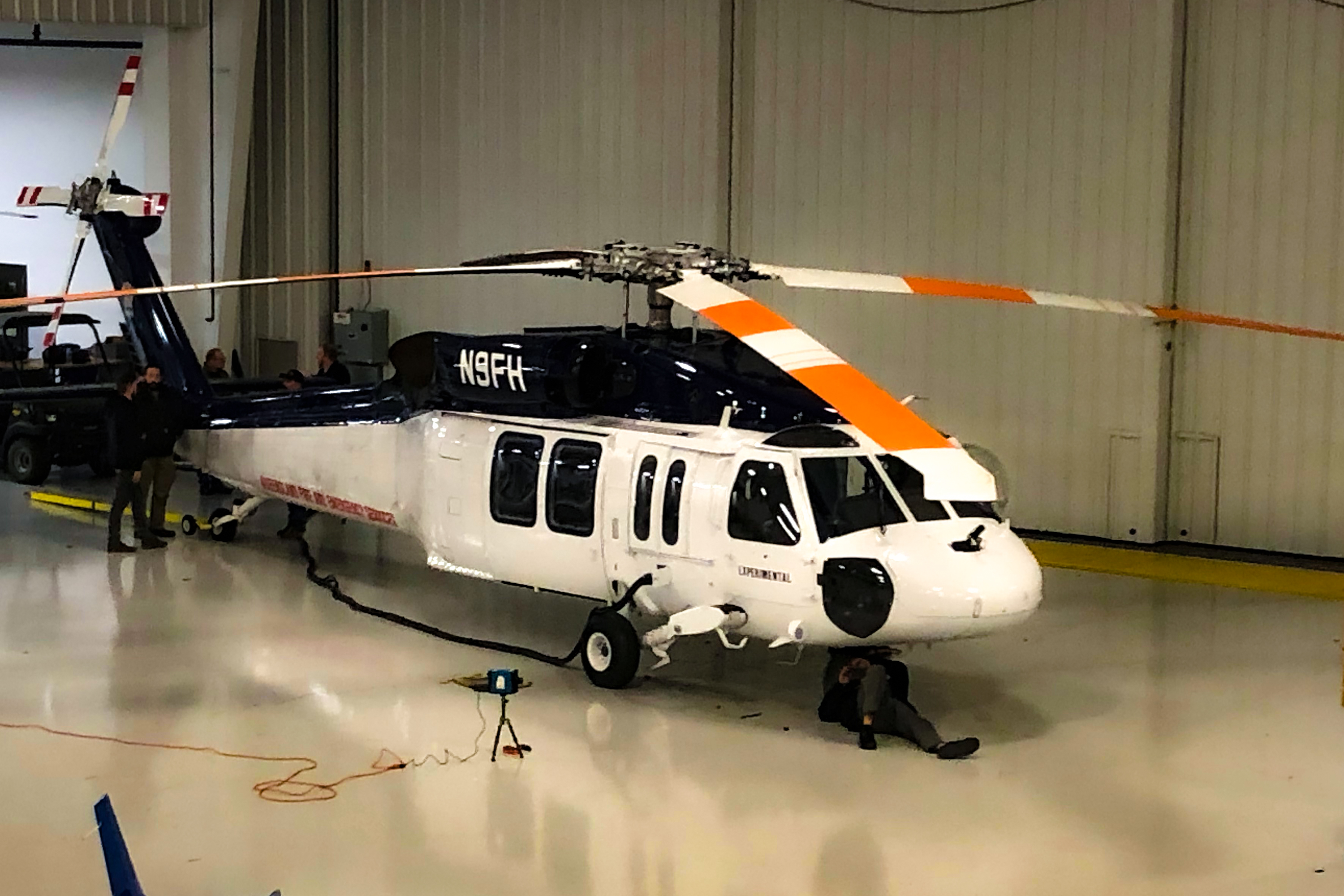Everything You Required to Understand About the UH 60 Helicopter
The UH-60 helicopter, a keystone of U.S. Military air travel because its debut in 1979, represents an amazing mix of engineering and functional adaptability. Recognized for its exceptional rate and variety, the UH-60 has actually been adapted for different objectives, from army transport to medical discharge. As army needs advance, so too does the helicopter, with ongoing innovations focused on enhancing its capabilities and incorporating modern-day technologies. To totally value the significance of the UH-60 in modern military operations, one must consider its background, style, and the future advancements that can redefine its role.
Background of the UH-60
Established in the late 1970s, the UH-60 Black Hawk helicopter arised as a reaction to the U.S. Army's requirement for a flexible energy helicopter that can perform a selection of objectives under tough conditions. The catalyst for its layout was the shortcomings recognized in the earlier helicopters utilized throughout the Vietnam Battle, especially in terms of speed, survivability, and ability to move.
The Black Hawk was created by Sikorsky Aircraft, incorporating advanced modern technologies and products to enhance its efficiency and sturdiness. It was formally introduced into service in 1979, quickly ending up being a critical possession for armed forces operations - uh 60. Its ability to deliver troops, clinical evacuation, and logistical support in both battle and altruistic goals made the Black Hawk a very useful component of the U.S. Army's aeronautics fleet
Throughout the years, the UH-60 has been constantly upgraded, adapting to the altering nature of war and the developing needs of modern-day armed forces procedures. Its functional background consists of engagement in major disputes, peacekeeping goals, and catastrophe relief initiatives, solidifying its reputation as a reliable and reliable helicopter in various atmospheres worldwide.

Style and Specifications
The style of the UH-60 Black Hawk helicopter constantly reflects a commitment to operational performance and flexibility. Developed by Sikorsky Aircraft, this medium-lift utility helicopter includes a smooth, wind resistant body that enhances rate and ability to move. Its tandem rotor system, characterized by two counter-rotating blades, minimizes vibration and raises lift capacity, enabling more secure operations in diverse atmospheres.
The UH-60 is powered by 2 T700-GE-701C turboshaft engines, giving a maximum speed of roughly 180 knots and a variety of around 400 nautical miles. Its durable airframe is created from advanced composite materials, making sure sturdiness while maintaining a relatively low weight. The helicopter has a maximum gross weight of regarding 22,000 extra pounds, supporting a flexible haul arrangement.

Missions and duties
A flexible platform, the UH-60 Black Hawk helicopter offers browse around this site a wide variety of duties and goals within military operations. Developed mostly for troop transport, it can lugging up to 11 soldiers, making it a vital asset for quick deployment and logistical support.
Along with troop transportation, the UH-60 masters medical emptying (MEDEVAC) objectives, geared up with innovative clinical devices to give critical care during transit. Its capability to run in varied atmospheres enhances its performance in combat search and rescue (CSAR) operations, where quick extraction of workers is crucial.
The helicopter likewise plays a significant function in reconnaissance and security objectives, using onboard sensors and tools to debrief. Additionally, its convenience prolongs to logistical support, with the ability of transferring products and devices to forward operating bases - uh 60.
In battle operations, the UH-60 can be furnished with numerous tool systems, allowing it to give close air support. Its multi-role capacity makes the Black Hawk a vital Look At This tool for modern-day army pressures, adjusting effortlessly to the developing needs of field of battle circumstances and making certain mission success throughout a series of operational contexts.
Performance and Capabilities
Known for its durable performance, the UH-60 Black Hawk helicopter boasts impressive abilities that improve its functional effectiveness throughout various objectives. uh 60. This multi-role airplane is furnished with powerful twin-engine Turbomeca Arriel 1D1 engines, providing extraordinary rate and ability to move, with an optimum cruise ship speed of roughly 150 knots and a functional range of around 400 nautical miles
The Black Hawk's innovative avionics and fly-by-wire control systems substantially enhance flight security and handling, allowing it to run in diverse environments, consisting of damaging climate conditions. Its flexibility is additional exhibited by its capacity to carry up to 11 totally furnished troops or a payload of around 8,000 pounds, making it suitable for troop transport, clinical emptying, and logistical support objectives.
Additionally, the UH-60 is developed for survivability, including enhanced airframes, ballistic security for crew and travelers, and advanced countermeasure systems to evade risks. The helicopter's dexterity and speed, combined with its capability for rapid implementation, make it an important asset in modern armed forces procedures, making sure that it remains a crucial element of tactical air assistance and combat zone wheelchair.
Future Developments

One considerable emphasis is the integration of innovative avionics systems, which will certainly improve situational understanding through boosted navigation and communication capabilities. This consists of the potential use of fabricated knowledge to aid pilots in decision-making and mission planning.
In addition, future versions may include innovative materials and layout features to reinforce the helicopter's durability and lower its look at here now radar trademark, boosting survivability in contested settings.
The introduction of hybrid-electric propulsion systems is additionally coming up, intending to improve fuel efficiency and lower logistical burdens. Such advancements might prolong functional array and reduce the helicopter's ecological footprint.

Conclusion
The UH-60 helicopter stands for a substantial development in military aeronautics considering that its intro in 1979. The UH-60's sustaining visibility emphasizes its important function in contemporary army operations and highlights the ongoing evolution of army aeronautics technology.
The UH-60 helicopter, a cornerstone of U.S. Army air travel because its launching in 1979, stands for an exceptional mix of design and functional versatility. As armed forces requirements progress, so too does the helicopter, with continuous developments intended at enhancing its abilities and incorporating modern technologies.The style of the UH-60 Black Hawk helicopter constantly shows a dedication to functional efficiency and adaptability. Developed by Sikorsky Aircraft, this medium-lift energy helicopter includes a streamlined, wind resistant fuselage that boosts speed and maneuverability.The UH-60 helicopter represents a considerable improvement in military aviation since its intro in 1979.